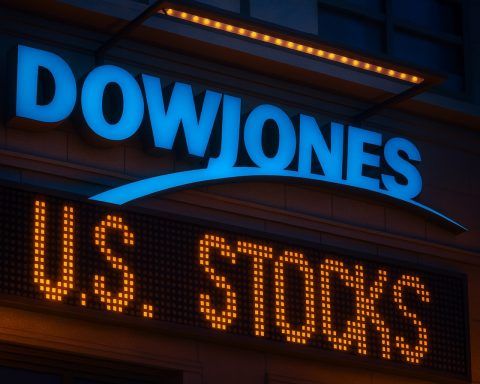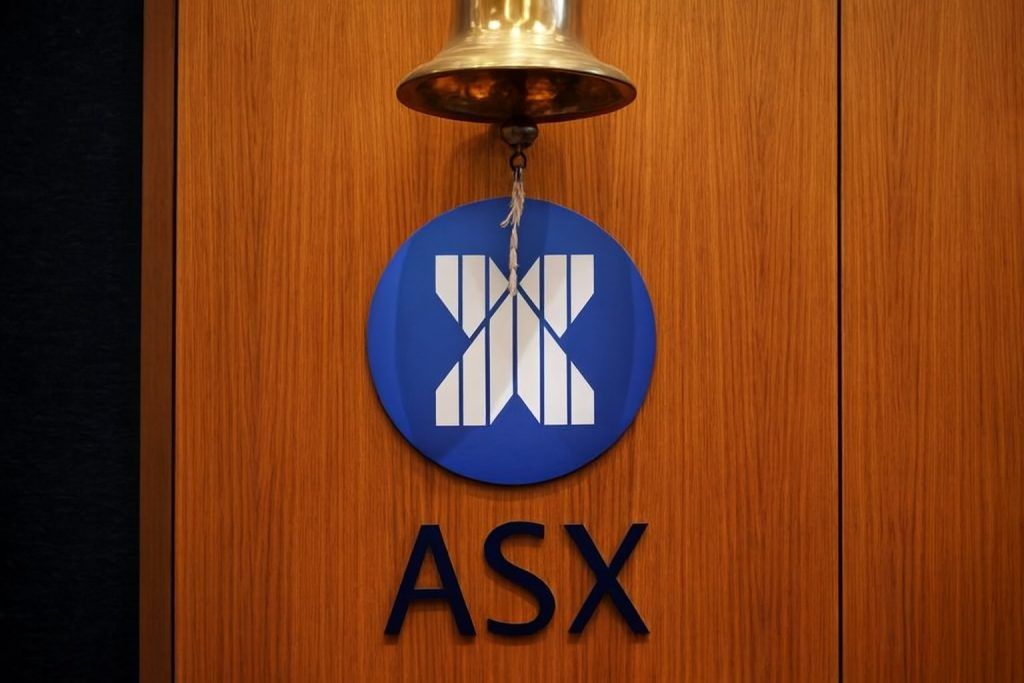LONDON, Saturday 22 November 2025 – The UK stock market ended a bruising week with a small relief rally on Friday, even as a barrage of weak economic data and pre‑Budget anxiety kept investors firmly on edge.
The blue‑chip FTSE 100 closed up 12.06 points, or 0.1%, at 9,539.71 on Friday, modestly outperforming continental peers but still down about 1.6% over the week. The more domestically focused FTSE 250 slipped 0.1% to 21,363.37, taking its weekly loss to roughly 2.1%, while the AIM All‑Share fell 0.8% on the day and 1.4% on the week. [1]
A late bounce driven by hopes of US and UK interest‑rate cuts and dip‑buying in housebuilders and consumer stocks helped the main index claw back intraday losses, but the overall tone remained unmistakably cautious.
Key takeaways for UK investors
- FTSE 100 ekes out a 0.1% gain on Friday but still posts a sizable weekly loss as tech‑linked and defensive names sell off. [2]
- Retail sales, PMI, public borrowing and consumer confidence all weaken, sharpening concerns about a potential downturn ahead of the 26 November Autumn Budget. [3]
- Housebuilders and drinks groups rally on rate‑cut bets, while defence and mining stocks slide amid global risk‑off moves and talk of progress on Ukraine peace proposals. [4]
- ASOS sinks on a downbeat profit outlook, but Games Workshop hits fresh record highs, underlining the market’s harsh stock‑by‑stock discrimination. [5]
- Moody’s affirms the UK’s Aa3 sovereign rating and the Treasury trails new tariffs on low‑value imports, signalling a tax‑heavy Budget with big implications for retailers, bond markets and sterling. [6]
Market performance: a fragile end to a volatile week
Friday’s close figures tell a story of stabilisation rather than recovery.
- FTSE 100: +0.1% on the day to 9,539.71, still down around 1.6% for the week.
- FTSE 250: –0.1% to 21,363.37, extending its losing streak to eight sessions and leaving it about 2.2% lower on the week. [7]
- AIM All‑Share: –0.8% on Friday to 735.64, with smaller‑cap growth names hit hard by risk aversion. [8]
The UK benchmark briefly traded more than 1% lower earlier in the session as European equities logged their biggest weekly drop since July, dragged down by a renewed sell‑off in expensive tech names and a sharp fall in defence stocks. [9]
The mood improved late in the London day after New York Fed President John Williams signalled that US interest rates could be trimmed again “in the near term”, prompting traders to ramp up bets on a December Fed rate cut and helping global equities stabilise. [10]
Even so, volatility indicators and the pattern of sector moves suggest many institutional investors are still reducing risk, not adding it, ahead of next week’s Budget and a critical Bank of England meeting in December.
Data dump: retail sales, borrowing and PMI paint a “grim backdrop”
Friday’s macroeconomic releases provided the clearest explanation for the week’s risk‑off tone.
Retail sales slide for the first time since May
Official figures from the Office for National Statistics (ONS) showed that retail sales volumes fell 1.1% in October compared with September, the first monthly decline since May and far worse than expectations for flat growth. Sales were just 0.2% above their level a year earlier and remain about 3.3% below pre‑pandemic levels. [11]
Supermarkets, clothing chains and online retailers all reported weaker volumes as households held back spending, with many shoppers apparently waiting for Black Friday discounts amid a squeeze from high living costs and tax uncertainty. [12]
Public finances: borrowing higher than forecast
The ONS also confirmed that public sector net borrowing reached £17.4 billion in October, the third‑highest October reading on record, and well above both market expectations and the Office for Budget Responsibility’s £14.4 billion forecast. [13]
Between April and October, the government has already borrowed £116.8–117 billion, about £10 billion more than projected earlier in the year and the highest year‑to‑date borrowing tally outside the pandemic period. [14]
This leaves Chancellor Rachel Reeves heading into Wednesday’s Budget needing to raise an estimated £20–30 billion in additional tax revenue to stay within her self‑imposed fiscal rules, according to economists and ratings agencies. [15]
Business surveys and confidence: growth barely positive
The picture from business and confidence surveys was no better:
- The flash composite PMI for November fell to 50.5, down from 52.2 in October and below economists’ expectations, implying quarter‑on‑quarter GDP growth of only about 0.1%. [16]
- The PMI suggested that private‑sector employment is now falling, and that firms are delaying investment decisions while they wait to see how hard they are hit by the Budget. [17]
- The GfK consumer confidence index dropped two points to –19 in November, with all components – including views on personal finances and major purchases – weakening as households brace for higher taxes and energy bills. [18]
Economists at Capital Economics and other consultancies described the combination of weaker sales, high borrowing and softer surveys as a “pretty grim picture” ahead of the Budget – a phrase that was frequently repeated across City commentary on Friday. [19]
Energy bills: Ofgem announces a higher price cap
Adding to the pressure on real incomes, Ofgem confirmed that the energy price cap will rise by 0.2% from January to March 2026, taking the typical dual‑fuel household bill to £1,758 a year for those paying by direct debit. [20]
In real (inflation‑adjusted) terms, energy bills are lower than at the peak of the crisis, but they remain about 40% higher than before 2021, reinforcing the squeeze on discretionary spending that shows up so clearly in October’s retail data. [21]
Sector moves: defensive rotation with a twist
Against this dreary macro backdrop, Friday’s sector moves across the FTSE indices reflected a classic “bad news is good news” trade in some areas – and simple risk aversion in others.
Housebuilders and consumer stocks bounce
One of the biggest bright spots was UK housebuilders:
- Persimmon rallied about 4.7%
- Barratt Redrow climbed 3.6%
- Berkeley Group added roughly 2.2% [22]
Investors have become more confident that the Bank of England will cut rates again in December, with money markets now pricing in more than an 80% chance of a move, followed by additional easing in 2026. [23]
Lower mortgage rates and the possibility of housing‑focused support measures or tweaks to Lifetime ISAs (LISAs) in the Budget added fuel to the rebound. [24]
In consumer staples, Diageo rose strongly, helping push the FTSE 100 beverages sub‑index up around 2% on the day. [25] In risk‑off periods, investors often flock to drinks, food and household‑goods makers whose earnings are more resilient through the cycle.
Defence and miners under pressure
By contrast, aerospace and defence stocks were among the worst performers, even though they had been a key pillar of the UK market earlier in the year:
- The FTSE 350 aerospace & defence index dropped more than 3%, hitting a three‑month low. [26]
- Heavyweights such as Rolls‑Royce, Melrose Industries and BAE Systems all traded lower, as global defence shares slumped on speculation that a new US‑backed peace plan for Ukraine could gain traction. [27]
Investors also shunned mining stocks, with precious‑metals miners down around 2.2% and industrial metals names off 1.8%, mirroring weakness in copper and other base metals as growth concerns resurfaced. [28]
Tech‑linked funds hit by AI bubble fears
Global anxiety that the artificial‑intelligence boom may have overshot continued to reverberate in London:
- Polar Capital Technology Trust slid about 5%
- Scottish Mortgage Investment Trust lost just over 3% [29]
Those declines came after a dramatic two‑day swing in US markets surrounding Nvidia’s latest earnings, where an initially euphoric reaction gave way to worries about stretched valuations and the risk of an “AI bubble”, prompting analysts and strategists to urge more caution on high‑growth names. [30]
Stock stories to watch: ASOS sinks, Games Workshop powers on
ASOS: profit warning lands in a tough retail climate
One of the most closely watched UK names on Friday was ASOS, which reported full‑year numbers and guidance that disappointed an already sceptical market.
The online fashion retailer:
- Reported a third consecutive annual decline in sales, with FY25 revenue down nearly 15%
- Delivered adjusted EBITDA of around £132 million, slightly below consensus forecasts
- Warned that fiscal 2026 profit is likely to come in below market expectations, citing subdued demand and intense competition
ASOS shares fell between 5% and 10% intraday, hitting multi‑year lows before recovering slightly. [31]
Analysts highlighted that ASOS is making progress in cutting losses and improving cash flow, but warned that the combination of weak UK consumer spending, rising energy bills and looming tax hikes leaves little room for error in its turnaround plan. [32]
Games Workshop: fantasy miniatures, very real returns
In sharp contrast, Games Workshop continued its remarkable run:
- Shares rose around 2.8% on Friday to close near £187–188, marking another record high. [33]
- The group recently upgraded guidance, saying it expects first‑half core revenue of at least £310 million and profit before tax of at least £135 million, both well ahead of the prior year. [34]
A surge in licensing income from media and gaming deals, combined with still‑robust demand for its Warhammerminiatures and rulebooks, has made Games Workshop one of the stand‑out winners of 2025 in the FTSE 100 – and a rare UK‑listed play on global entertainment IP.
Mid‑caps: Hammerson, Inchcape and Ithaca Energy
In the FTSE 250, Friday’s action was dominated by stock‑specific catalysts. According to Alliance News:
- Hammerson jumped about 7.1% after buying the remaining 50% of The Oracle shopping centre in Reading and raising guidance for 2025 gross rental income growth to 19%.
- Inchcape climbed roughly 3% after Bank of America initiated coverage with a “buy” rating and flagged the potential for £1 billion of share buybacks over the second half of the decade.
- Ithaca Energy tumbled around 13% following a downgrade to “sell” from Goldman Sachs, highlighting ongoing investor unease over the UK’s evolving North Sea tax regime. [35]
These sharp single‑stock moves underline how idiosyncratic risk remains high in UK mid‑caps, where liquidity is thinner and analyst views can swing sentiment quickly.
Sterling, rates and the bond market: calm on the surface
In currency markets, sterling was broadly steady around $1.30–1.31 and about 88 pence per euro on Friday, even as the data flow painted a sombre picture. [36]
Reuters reported that:
- The pound was set for a weekly loss of around 0.8% against the dollar, reflecting both the softer UK outlook and shifting expectations for US rates.
- Markets now price more than an 80% chance of a Bank of England rate cut in December, with at least two further cuts pencilled in by mid‑2026. [37]
Currency strategists argue that the timing of the Budget – just days before the BoE meets – is amplifying uncertainty. A tighter‑than‑expected fiscal stance might ease pressure on the Bank to act quickly; a perceived lack of discipline could push gilt yields higher and complicate the rate‑cut path.
Budget countdown: Moody’s, tariffs and political stakes
With just four days to go until the Autumn Budget on Wednesday 26 November, policy headlines are starting to matter as much as macro data for UK assets.
Moody’s thumbs‑up – with strings attached
On Friday night, Moody’s affirmed the UK’s sovereign rating at Aa3 with a stable outlook, citing the country’s large, diversified economy and the government’s stated commitment to reducing its deficit. [38]
However, the agency explicitly assumed that fiscal measures in the 2026 Budget will be consistent with existing fiscal rules, and echoed market consensus that Reeves will need to raise £20–30 billion in extra taxes to keep debt‑service costs under control. [39]
For equity investors, the key question is where those tax rises will fall – corporate profits, wealth, property or consumption – and how that shapes sector performance into 2026.
New tariffs on low‑value imports
Late on Friday, the Treasury also announced plans to scrap the current tariff exemption for imported goods priced under £135, a move expected to raise around £500 million a year. [40]
The measure is explicitly designed to level the playing field for domestic retailers such as Next and Primark‑owner Associated British Foods, which currently pay duties on bulk imports, while individual consumers can order similar low‑value items from overseas platforms – often Chinese – tariff‑free. [41]
The government insists the impact on consumer prices will be “modest”, but markets will be watching how online‑only retailers, fashion chains and logistics firms trade early next week as investors assess who stands to gain or lose from the change.
Political temperature rising
Saturday’s political coverage underlined how high the stakes have become. A long read in the Guardian characterised the upcoming Budget as “make‑or‑break” for Reeves and Prime Minister Keir Starmer, after weeks of mixed messaging over possible income‑tax hikes and fiscal discipline. [42]
From an investor’s point of view, the key risk is that policy uncertainty itself – not just the eventual tax mix – continues to suppress business investment and consumer spending, a point echoed by both business surveys and market strategists over the past 48 hours. [43]
What UK stock investors should watch next week
With the indices closed for the weekend, attention now turns to a packed calendar that could set the tone for the rest of 2025 and early 2026:
- Autumn Budget (Wednesday 26 November)
- Details of tax rises and spending plans, including any measures on property, wealth, windfall taxes or allowances. [44]
- Possible support for housing, energy bills and public services, which would feed directly into expectations for housebuilders, utilities, retailers and healthcare stocks.
- Bank of England expectations (into December)
- Any hints in Budget documentation or subsequent commentary that might shift market pricing for a December rate cut and the likely pace of easing in 2026. [45]
- Global risk sentiment
- Whether concerns about an AI‑driven tech bubble and stretched US valuations continue to drive sector rotation away from growth and into defensives – a key driver of moves in London‑listed tech funds, miners and consumer staples. [46]
- UK corporate updates
- Upcoming results from large‑cap names such as Compass and easyJet, along with any further trading statements from big domestic retailers, will help investors judge how quickly the October slowdown is feeding into earnings. [47]
For now, Friday’s modest rise in the FTSE 100 looks less like the start of a new uptrend and more like a pause in a market that is still digesting weaker data, tighter fiscal prospects and lingering global risks. With a pivotal Budget and central‑bank decision just days away, UK equities remain firmly in the hands of macro headlines.
References
1. www.lse.co.uk, 2. www.lse.co.uk, 3. www.reuters.com, 4. www.reuters.com, 5. www.reuters.com, 6. www.reuters.com, 7. www.lse.co.uk, 8. www.lse.co.uk, 9. www.reuters.com, 10. www.theguardian.com, 11. www.ons.gov.uk, 12. www.theguardian.com, 13. www.reuters.com, 14. www.reuters.com, 15. www.reuters.com, 16. www.lse.co.uk, 17. www.reuters.com, 18. www.reuters.com, 19. www.standard.co.uk, 20. www.ofgem.gov.uk, 21. www.energy-uk.org.uk, 22. www.lse.co.uk, 23. www.reuters.com, 24. www.lse.co.uk, 25. www.reuters.com, 26. www.reuters.com, 27. www.standard.co.uk, 28. www.reuters.com, 29. www.lse.co.uk, 30. www.bloomberg.com, 31. www.reuters.com, 32. www.reuters.com, 33. www.marketwatch.com, 34. investor.games-workshop.com, 35. www.lse.co.uk, 36. www.reuters.com, 37. www.reuters.com, 38. www.reuters.com, 39. www.reuters.com, 40. www.reuters.com, 41. www.reuters.com, 42. www.theguardian.com, 43. www.standard.co.uk, 44. www.gov.uk, 45. www.reuters.com, 46. www.reuters.com, 47. www.lse.co.uk










